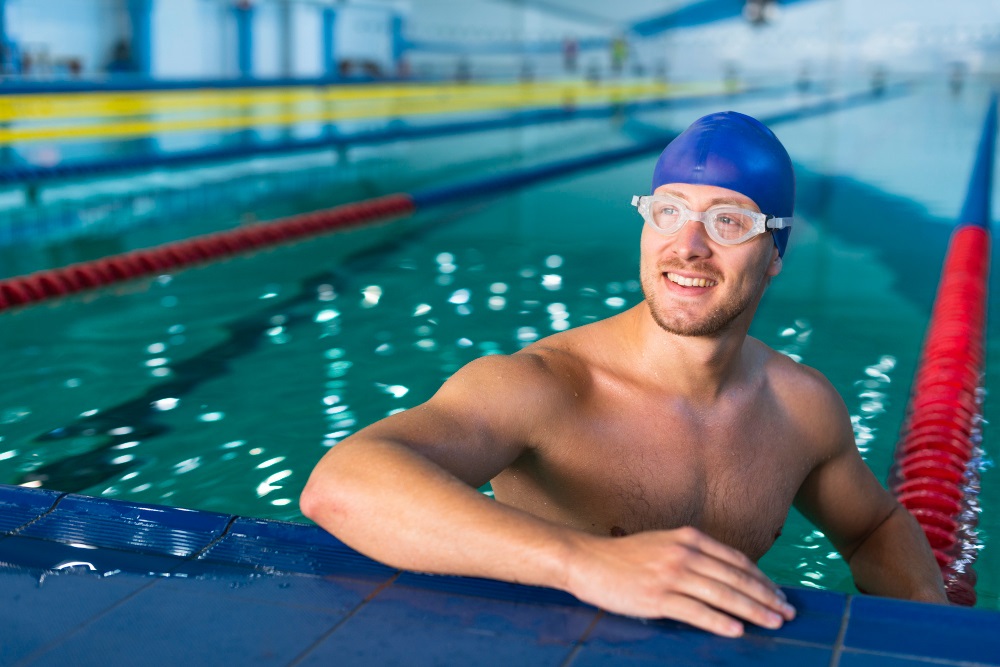
Swimming is not just a skill; it’s a life-saving ability and a gateway to a plethora of health benefits.
However, for many adults, the thought of learning to swim can be intimidating. Whether it’s due to fear of water, lack of opportunity during childhood, or simply feeling self-conscious about starting later in life, the barriers to taking swimming lessons as an adult can seem daunting.
Yet, with the right guidance and approach, anyone can become a proficient swimmer. In this comprehensive guide, we’ll explore the importance of adult swimming lessons, what to expect, and how to get started on your aquatic journey.
The Importance of Learning to Swim as an Adult
Learning to swim as an adult carries numerous benefits, both physical and mental. Firstly, swimming is an invaluable life skill that can save lives in emergency situations.
Drowning is one of the leading causes of accidental death worldwide, and having the ability to swim significantly reduces the risk of such tragedies.
Moreover, swimming is an excellent form of exercise that offers a full-body workout without putting stress on joints.
It improves cardiovascular health, strengthens muscles, and enhances flexibility and endurance. For individuals with arthritis or other joint conditions, swimming provides a low-impact alternative to traditional land-based exercises.
Beyond its physical benefits, swimming can also have profound mental health benefits. The rhythmic nature of swimming, combined with the calming effects of water, can reduce stress, anxiety, and depression.
Many people find swimming to be meditative, allowing them to disconnect from the stresses of daily life and focus on the sensation of being in the water.
Overcoming Common Barriers
Despite the many benefits of learning to swim, there are several common barriers that prevent adults from taking the plunge.
Fear of water is perhaps the most significant obstacle for many beginners. This fear may stem from a traumatic experience, a lack of exposure to water during childhood, or simply feeling out of control in the water.
Additionally, adults may feel self-conscious about their appearance or abilities in a swimsuit, especially in a group setting such as a swimming class.
Overcoming these barriers requires patience, encouragement, and a supportive learning environment.
Choosing the Right Swimming Program
When selecting a swimming program, it’s essential to consider your individual goals, comfort level, and learning style.
Many community centers, gyms, and swim clubs offer adult swimming lessons tailored to various skill levels, from absolute beginners to advanced swimmers.
If you’re a complete novice, look for programs specifically designed for adult beginners. These classes typically focus on water safety, basic strokes (such as freestyle and backstroke), and building confidence in the water.
Experienced instructors understand the unique challenges faced by adult learners and can provide personalized instruction to help you progress at your own pace.
For those who are more comfortable in the water but want to improve their technique or fitness level, intermediate or advanced swimming classes may be more appropriate.
These classes often include drills, workouts, and stroke refinement to help participants become more efficient and proficient swimmers.
What to Expect in Adult Swimming Lessons
Before your first swimming lesson, it’s natural to feel nervous or apprehensive, but rest assured that you’re not alone.
Many adults embark on the journey of learning to swim later in life, and instructors are trained to provide a supportive and encouraging learning environment.
During your first lesson, your instructor will likely begin by assessing your comfort level in the water and your swimming abilities.
This may involve activities such as floating on your front and back, kicking with a kickboard, and practicing basic arm movements.
As you progress through the lessons, you’ll gradually build upon these foundational skills, learning new strokes, breathing techniques, and water safety skills along the way.
Don’t be discouraged if progress feels slow at first; learning to swim is a gradual process that requires patience and persistence.
Tips for Success
While the guidance of a qualified instructor is invaluable, there are several things you can do to maximize your success in adult swimming lessons:
Practice Consistently: Like any skill, swimming requires regular practice to improve. Try to attend swimming lessons consistently and make time for independent practice outside of class.
Set Realistic Goals: Set achievable goals for yourself, whether it’s mastering a particular stroke, swimming a certain distance without stopping, or simply feeling more comfortable in the water.
Stay Positive: Learning to swim can be challenging, but maintaining a positive attitude will go a long way toward achieving success. Celebrate your progress, no matter how small, and don’t be too hard on yourself if you have setbacks along the way.
Be Patient: Rome wasn’t built in a day, and neither are swimming skills. Remember that everyone progresses at their own pace, and it’s okay to take your time.
Seek Support: Surround yourself with supportive friends, family members, or fellow swimmers who can encourage and motivate you on your swimming journey.
Conclusion
Learning to swim as an adult may seem daunting, but with the right guidance, encouragement, and practice, it’s entirely achievable.
Whether you’re looking to improve your fitness, overcome a fear of water, or simply acquire a valuable life skill, adult swimming lessons offer a safe and supportive environment to help you reach your goals. So why wait? Dive in and start making waves today!






